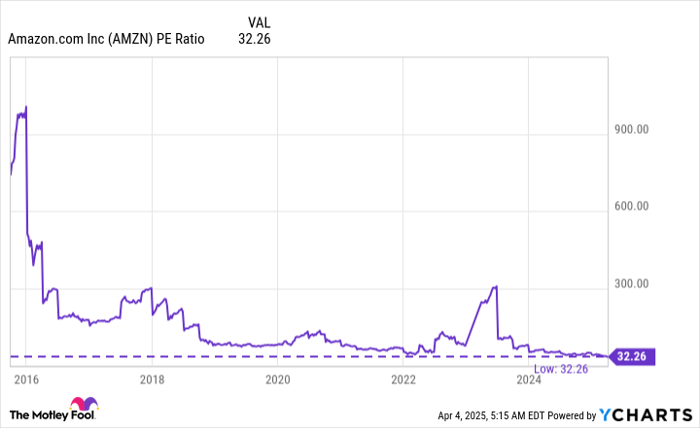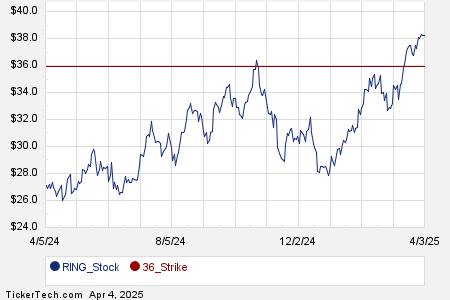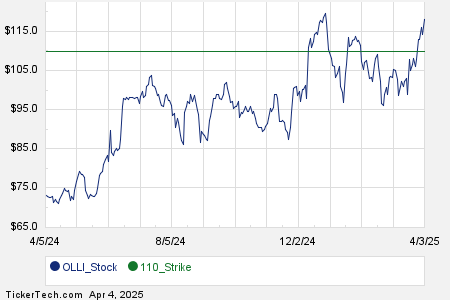Market Anxiety Grows Over Trump’s Tariff Program Impact
President Donald Trump’s “Liberation Day” tariff initiative has raised significant concerns, causing markets to decline sharply on Thursday and Friday. Growing apprehension regarding the potential for these tariffs to spur a recession led investors to seek refuge in safer assets like U.S. Treasury bills. Analysts at J.P. Morgan have now increased their recession probability forecast to 60%.
The Stock market suffered a massive loss, around $3.1 trillion, on Thursday, marking its most significant decline since 2020, with the S&P 500 (SNPINDEX: ^GSPC) plummeting 4.8%. The downward trend continued on Friday, with the S&P 500 falling an additional 5.9%, resulting in a total two-day loss of 10.5%.
Where to invest $1,000 right now? Our analyst team just revealed what they believe are the 10 best stocks to buy right now. Learn More »
Identifying Vulnerable Stocks Amid Tariff Chaos
As investors assess which stocks might be hit hardest by the new tariffs and possible retaliatory measures, some companies stand out. One major player, Amazon (NASDAQ: AMZN), has experienced a significant 12.8% decline since the tariff announcement, erasing all its gains from the past year.
1. Rising Costs for Imported Goods on Amazon
Amazon faces potential price increases on imported goods as tariffs rise. The top U.S. import categories, which include vehicles, auto parts, pharmaceuticals, and crude oil, present limited risk to Amazon, particularly in auto parts and pharmaceuticals. However, important product categories for Amazon, such as computers, cellphones, electronics, and accessories, could see prices rise due to tariffs. With approximately 40% of the U.S. e-commerce market share and projected 2024 sales of $638 billion, Amazon is the second-largest U.S. firm by total sales, just behind Walmart.
Shifting from a solely product-driven business model, Amazon has incorporated more services over time. In the fourth quarter of 2024, product sales comprised about 68% of total revenue. Escalating tariffs on non-U.S. manufactured goods could significantly hurt Amazon’s sales if prices surge and consumer spending slows, contributing to recession fears.
2. Exposure to Global Trade Risks
With tariffs potentially igniting a wider global trade war, Amazon’s international operations could face significant obstacles. The company serves about 130 locations worldwide, combining local and U.S. delivery options. Such a trade conflict could disrupt Amazon’s retail model globally. Nevertheless, Amazon’s stature as a retail leader and its diverse operations could help mitigate these pressures, unlike smaller competitors.
3. Declining Stock Value of Amazon
A two-day decline of 10.5% is stark for investors. However, seasoned investors know to navigate short-term volatility. This isn’t Amazon’s first stock downturn; for example, the stock lost 50% of its value in 2022, and despite recent setbacks, it has more than doubled since then.
What matters now is the overall health and resilience of the company. If you believe in Amazon’s strong business fundamentals, the current market turbulence might present a buying opportunity for long-term investors.
Presently, Amazon Stock is trading at its lowest price-to-earnings (P/E) ratio in over a decade. Investors may find this appealing, with potential for substantial returns over time.

Data by YCharts.
Considering the current circumstances, it would not be surprising if numerous wealthy investors seized the chance to acquire shares of Amazon at these prices. If you have a long-term investment horizon, you may want to consider doing the same.
Seize This Potentially Profitable Investment Opportunity
Do you ever feel you missed out on investing in top-performing stocks? If so, here’s your chance to catch up.
Occasionally, our team of analysts makes a strong recommendation for stocks poised for rapid growth. If you are concerned about missing your opportunity, now might be the best time to invest.
- Nvidia: A $1,000 investment when we doubled down in 2009 would be worth $263,993!
- Apple: A $1,000 investment when we doubled down in 2008 would now be valued at $38,523!
- Netflix: If you invested $1,000 in 2004 when we issued a double down, it would be worth $494,557!
We are currently issuing “Double Down” alerts for three exceptional companies, and this opportunity may not come again soon.
Continue »
*Stock Advisor returns as of April 1, 2025.
JPMorgan Chase is an advertising partner of Motley Fool Money. John Mackey, former CEO of Whole Foods Market, an Amazon subsidiary, is a board member at The Motley Fool. Jennifer Saibil has positions in Walmart. The Motley Fool has positions in and recommends Amazon, JPMorgan Chase, and Walmart. The Motley Fool’s disclosure policy is available for review.
The views and opinions expressed herein are those of the author and do not necessarily reflect those of Nasdaq, Inc.




